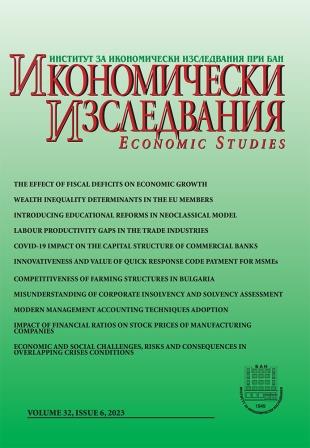Introducing Educational Reforms in Neoclassical Model
Introducing Educational Reforms in Neoclassical Model
Author(s): Mikayel Melkumyan Haykaz Igityan, Maria Sahakyan, Frida BaharyanSubject(s): Economy, National Economy
Published by: Институт за икономически изследвания при Българска академия на науките
Keywords: neoclassical growth; fiscal policy; education expenditures; education reform
Summary/Abstract: This paper extends the neoclassical model of economic growth by introducing human capital into production function and studies the impact of educational reform on economic performance. In the author’s model, the government taxes consumption to reallocate the resources to educational needs, which is one of the most prominent ingredients of human capital. The tax increase has costly consequences for the economy in the short-run, regarding the slowdown of economic activity, and the consumption loss. Thereafter, the increase in education builds additional human capital, making people more productive, recovering economic activity and stabilizing consumption at even higher levels in the long run. Thus, in the longer term, it is beneficial for the economies with low human capital to devote resources in favour of educational reforms, even though it carries the risks of political capital loss due to short-run economic costs. In the short run political capital decreases as a result of the implemented reform costs, which, on the other hand, indicate the cumulative loss of consumption. In the long run, however, the policymaker regains its political capital. Governments with low reputation cannot implement structural reforms. Besides, the authors compare the impact of low-efficient educational reforms with the impact of highly effective ones and come to the conclusion that consumption is formulated at a lower level in the former case.
Journal: Икономически изследвания
- Issue Year: 2023
- Issue No: 6
- Page Range: 41-53
- Page Count: 13
- Language: English

